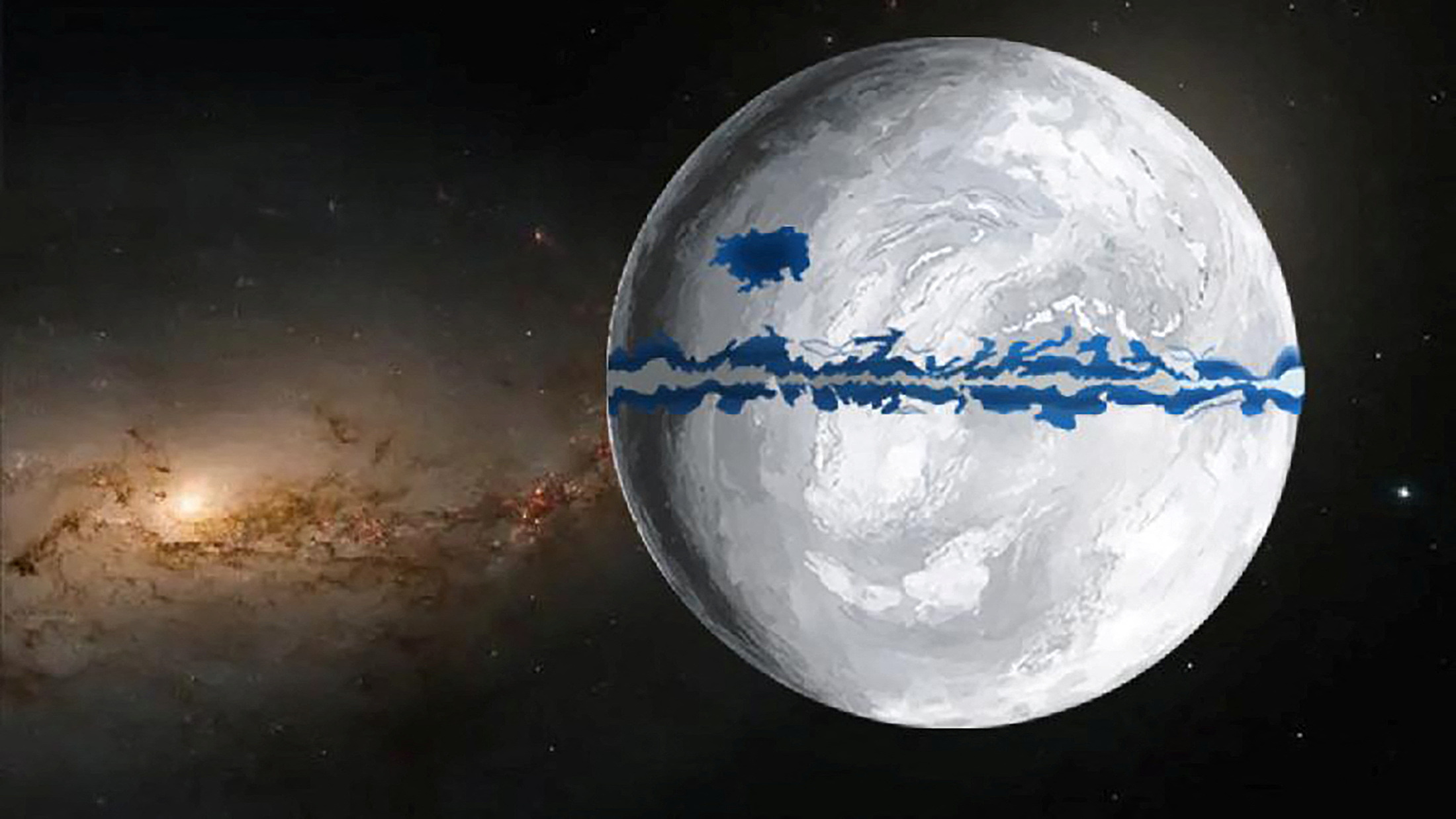The Emergence of Life on Earth
 |
| 04-07-2023 |
"The key finding of this study is that open-water -- ice-free -- conditions existed in mid-latitude oceanic regions during the waning stage of the Marinoan Ice Age.""Our study shows that, at least near the end of the Marinoan Snowball Earth event, habitable areas extended to mid-latitude oceans, much larger than previously thought.""Previous research argued that such habitable areas,at best, only existed in tropical oceans.""More extensive areas of habitable oceans better explains where and how complex organisms such as multicellular seaweed survived."Huyue Song, geobiologist, China University of Geosciences"It is widely believed that atmospheric carbon dioxide levels plummeted just prior to these events, causing the polar ice caps to expand and hence more solar radiation reflected back to space and the polar ice expanded further. And the Earth spiralled into Snowball Earth conditions.""Compared to the most recent Ice Age, glacier coverage was much more extensive and, more importantly, much of the ocean was frozen.""It is conceivable that these Snowball Earth events could have driven major extinctions, but apparently life, including complex eukaryotic organisms, managed to survive, attesting to the resilience of the biosphere."Shuhai Xiao, geobiologist, study-coauthor, Virginia Tech
 |
| An illustration shows Earth during the Marinoan Ice Age, 651–635 million years ago, when ice sheets covered most of the planet's surface. A new study suggests the presence of open waters in both low- and mid-latitude oceans rather than a planet completely frozen over. Huyue Song/Handout via REUTERS |
From 720 million to 535 million years ago during the Cryogenian Period, Earth was frozen over twice with runaway glaciation that made the planet look from space like a shimmering white snowball. Yet despite this, somehow life managed to survive at a time when the planet was known as "Snowball Earth". That survival comes much closer to a scientific explanation through a new study recently published.
In central China's Hubei Province, fossils identified as seaweed were unearthed in black shale, indicating that habitable marine environments were in fact more widespread then than had been previously known. Findings that support the hypothesis that it was more of a "Slushball Earth", where basic multi-cellular organisms were enabled to endure their exposure to the cold icy conditions at mid-latitudes that were believed to have been frozen solidly over in ice.
The seaweed fossils were proven to date from the second of the two freezes, during the Cryogenian Period at a time that ice sheets stretched from the poles toward the equator, an interval called the Marinoan Ice Age which lasted from roughly 651 million to 635 years ago, findings that demonstrate the world's oceans were not completely frozen through so that habitable refuges existed enabling multicellular eukaryotic organisms -- including plants, animals, fungi and mostly single-celled organisms called protists to survive.
The first single-cell organism arose from an Earth formed about 4.5 billion years ago, approximately during the first billion years of the planet's existence. Perhaps 2 billion years ago, multicellular organisms arrived. Only in the aftermath of the Cryogenian was it that warmer conditions returned leading to a rapid expansion of different life forms, about 540 million years ago.
Scientists believe that a greatly reduced force of the sun's warmth was able to reach Earth's surface as a result of solar radiation, falling on Earth's frozen ice sheets, bouncing off and back futilely into the atmosphere. The multi-cellular life that did eventually emerge including red algae, green algae and fungi emerged before he Cryogenian age and survived Snowball Earth. The Cryogenian freeze is assessed to have been far more severe than the most recent Ice Age that humans survived, ending approximately 10,000 years ago.
Labels: China, Fossils, Ice Ages, Snowball Earth, Study

0 Comments:
Post a Comment
<< Home